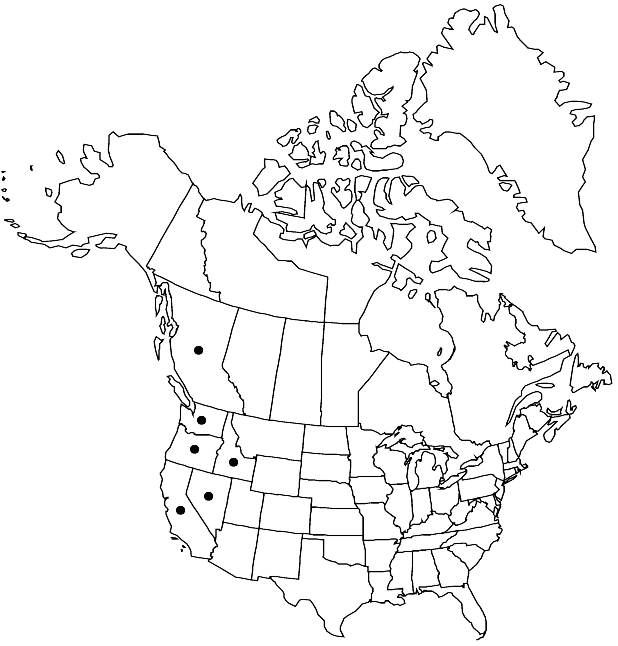Thelypodium laciniatum
in W. G. Walpers, Repert. Bot. Syst. 1: 172. 1842.
Biennials; somewhat glaucous, glabrous throughout. Stems branched proximally and/or distally, (1.3–)2.6–10(–14.5) dm. Basal leaves (and proximal cauline): petiole (1–)1.5–10(–15) cm; blade lanceolate to deltate-lanceolate, or oblong to ovate (lateral lobes oblong to ovate), (4.3–)6.8–24(–45) cm × (10–)18–85(–140) mm, margins pinnately lobed or laciniate (lobes sinuate, laciniate, or dentate). Cauline leaves petiolate; blade lanceolate to linear-lanceolate, similar to basal, smaller distally, margins entire or sinuate to laciniate. Racemes dense, slightly elongated in fruit (to 9.5 dm, flower buds narrowly oblong). Fruiting pedicels horizontal to, rarely, divaricate, straight, often stout, (2–)3–6.5(–15) mm, often flattened at base. Flowers: sepals erect, oblong to linear-oblong, (3.5–)4–7.5(–9.5) × (0.8–)1–2(–2.5) mm; petals white or purple, often linear, sometimes linear-lanceolate, (6–)8.5–18(–20) × 0.3–0.8(–1.5) mm, margins slightly crisped, claw strongly differentiated from blade, [(2.5–)3–6(–7) mm, widest at base]; nectar glands confluent, lateral and median; filaments subequal, (4.5–)6.5–12(–15) mm; anthers exserted, linear, 2–4(–5.5) mm, circinately coiled, (apiculate); gynophore (0.5–)1–5(–8.5) mm. Fruits divaricate-ascending to slightly reflexed, torulose, somewhat tortuous, terete, (2.5–)3.5–10(–12) cm × (0.7–)1–1.5(–2) mm; ovules 56–108 per ovary; style usually cylindrical, rarely subclavate, (0.3–)0.7–2.5(–4) mm. Seeds (0.7–)1–1.5(–1.8) × 0.5–0.7(–1) mm. 2n = 26.
Phenology: Flowering Apr–Aug.
Habitat: Rock crevices, cliffs, rocky outcrops, among boulders, serpentine rock, talus, canyon walls, limestone ledges
Elevation: 0-2400 m
Distribution

B.C., Calif., Idaho, Nev., Oreg., Wash.
Discussion
Selected References
None.